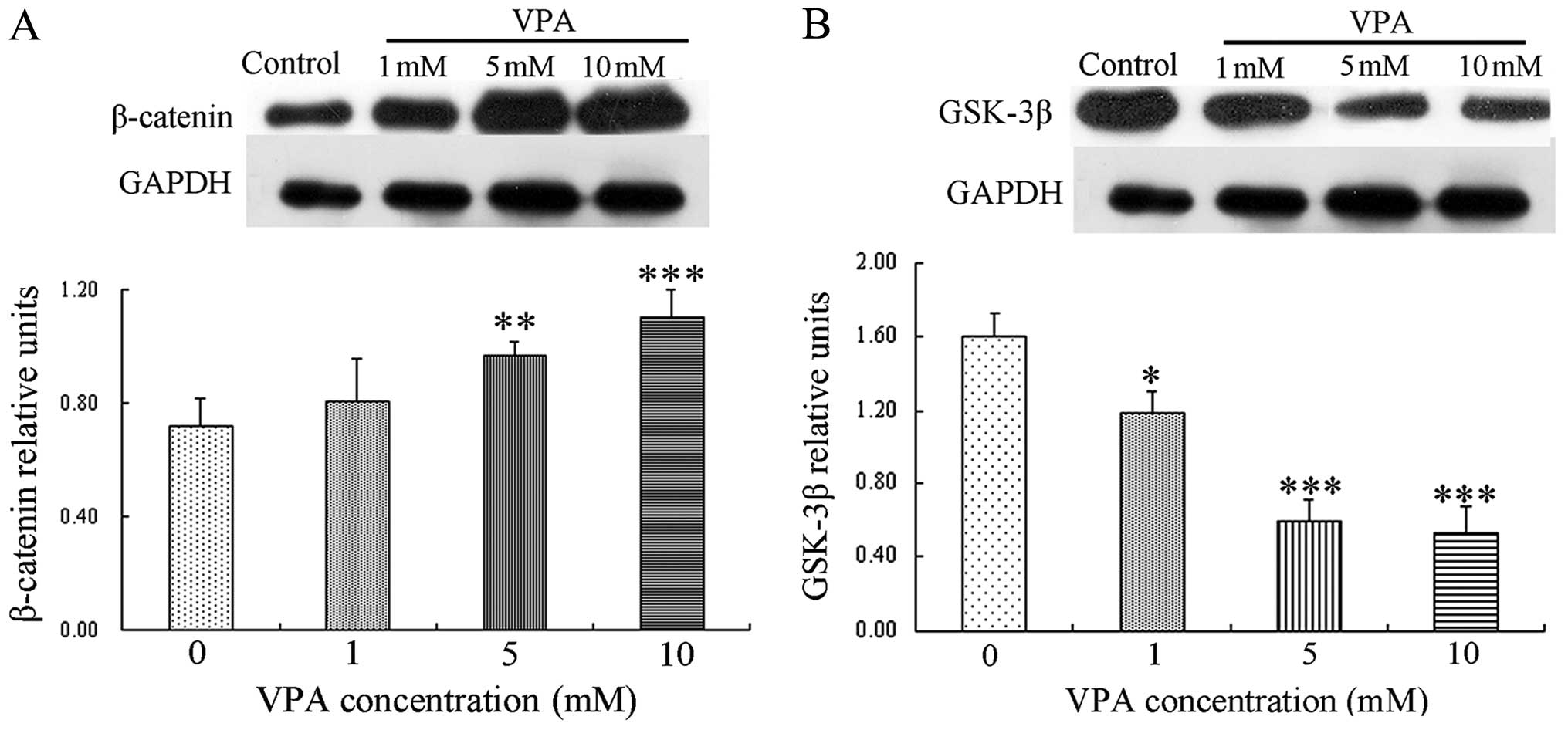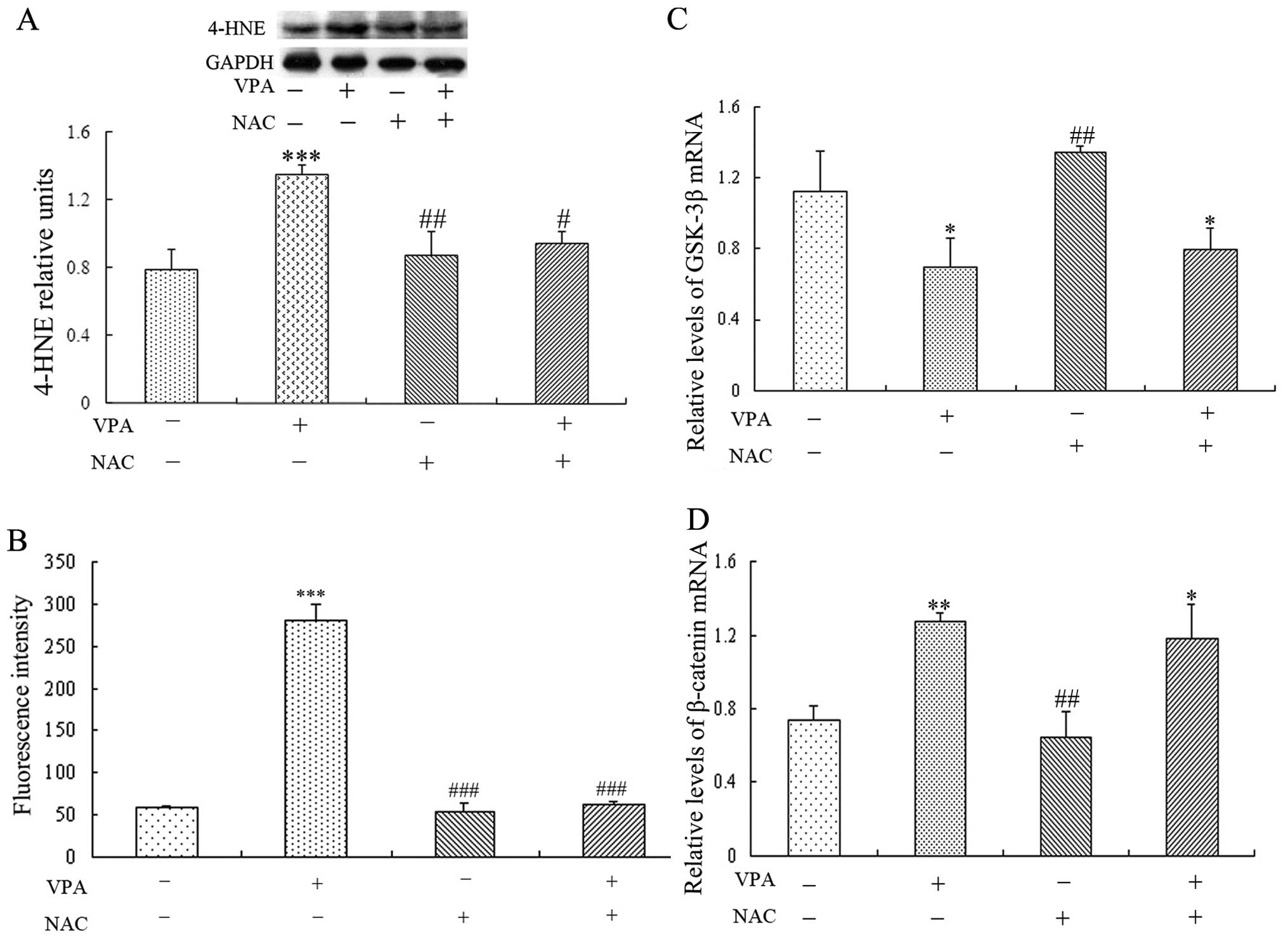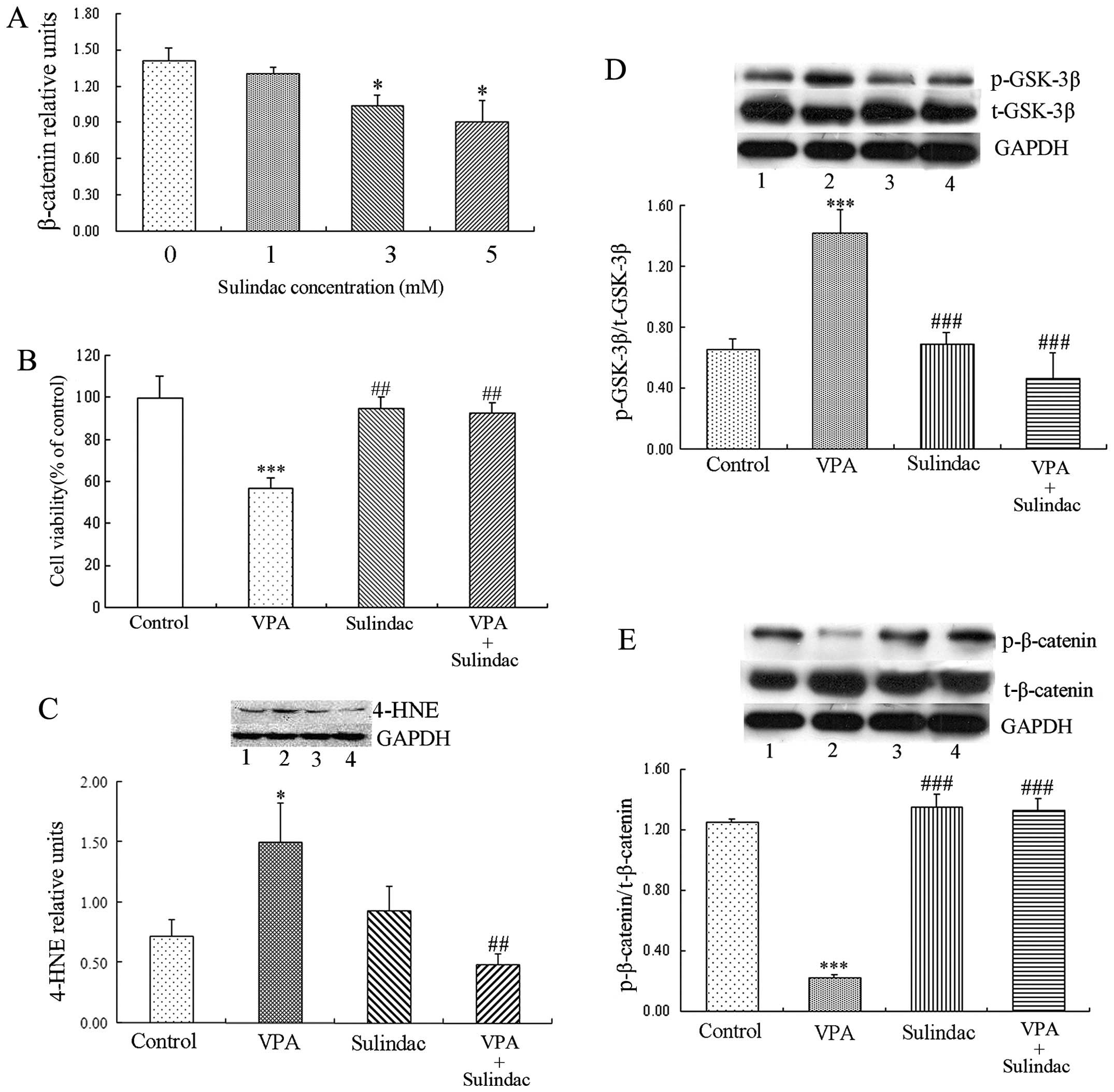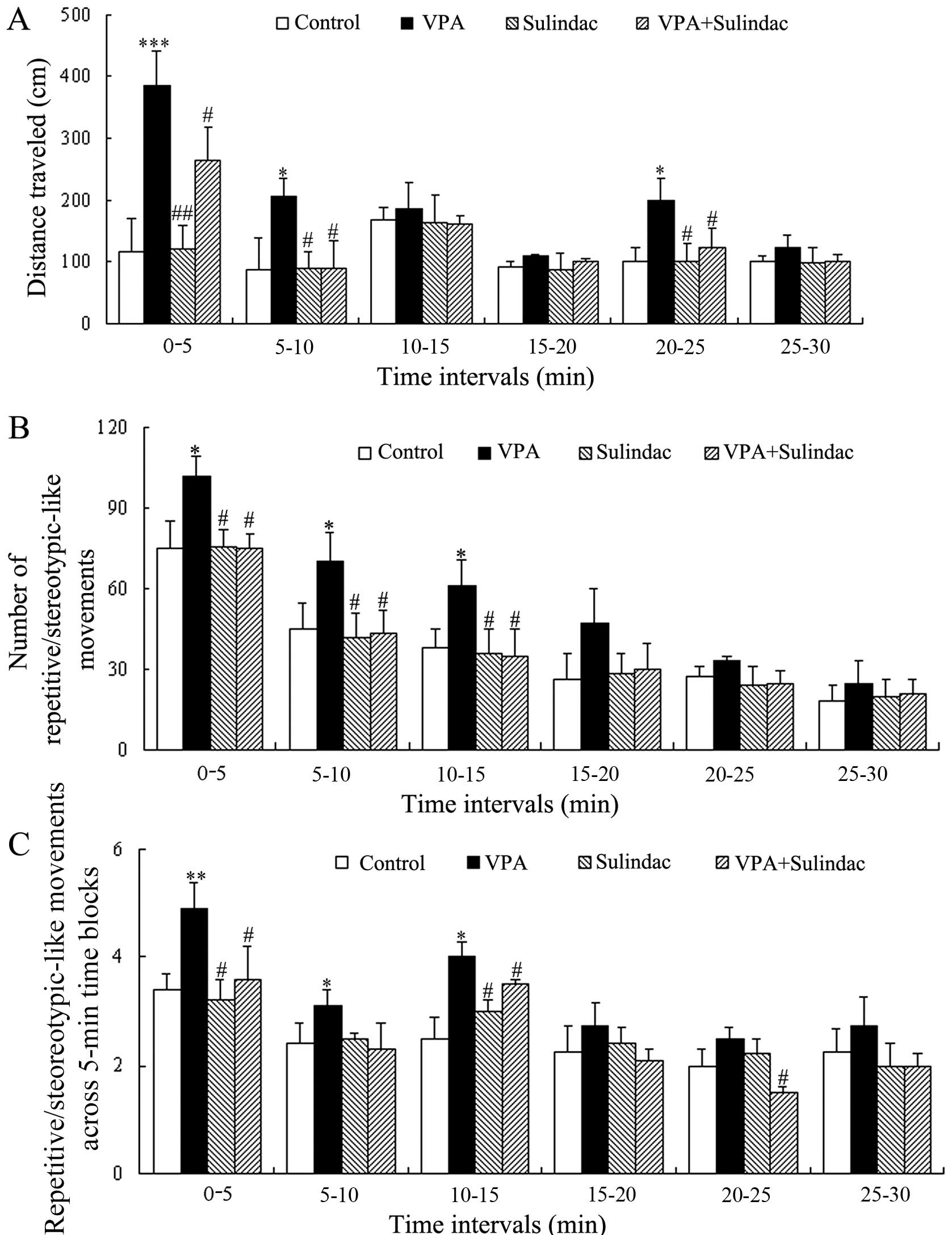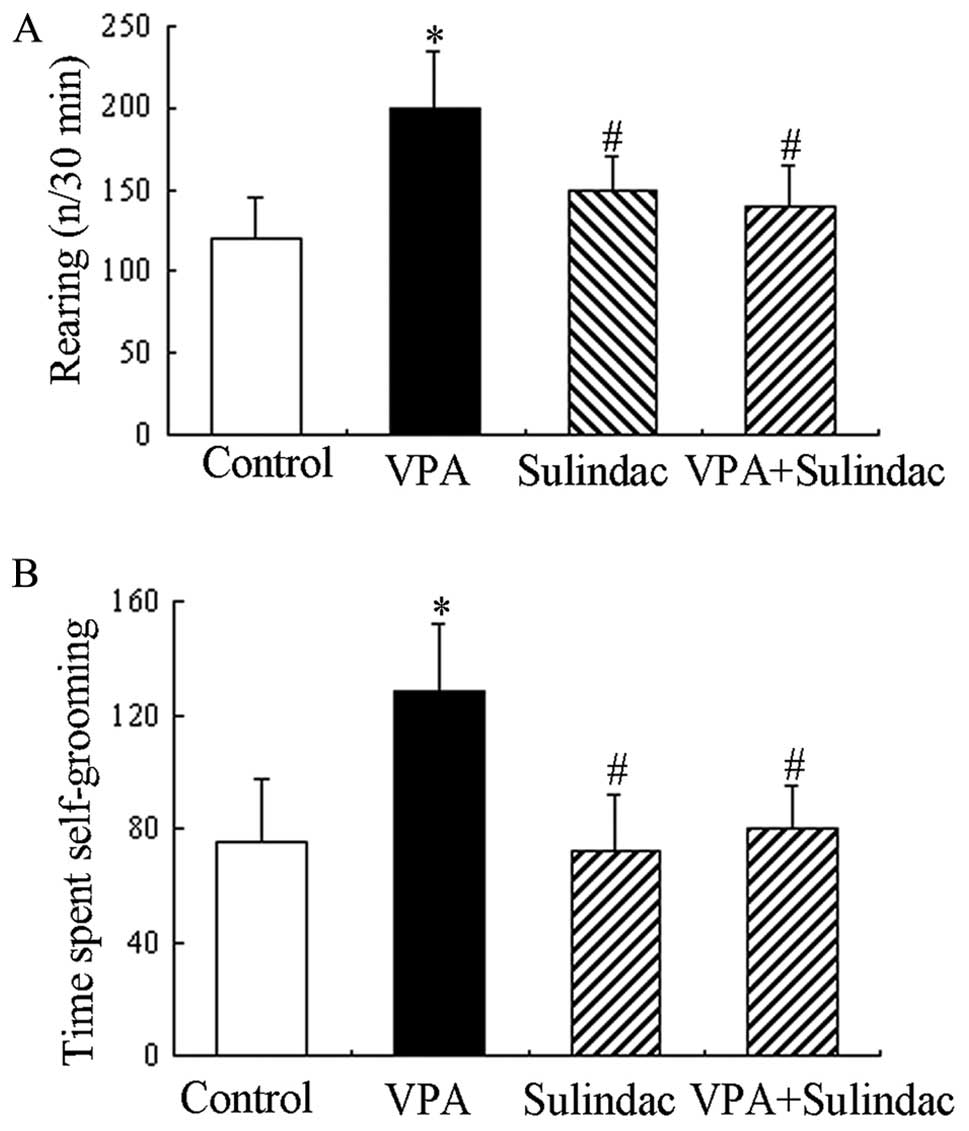|
1
|
Ghanizadeh A and Derakhshan N:
N-acetylcysteine for treatment of autism, a case report. J Res Med
Sci. 17:985–987. 2012.
|
|
2
|
Al-Ayadhi LY and Elamin NE: Camel milk as
a potential therapy as an antioxidant in autism spectrum disorder
(ASD). Evid Based Complement Alternat Med. 2013:6028342013.
View Article : Google Scholar : PubMed/NCBI
|
|
3
|
Wang Z, Xu L, Zhu X, et al: Demethylation
of specific Wnt/β-catenin pathway genes and its upregulation in rat
brain induced by prenatal valproate exposure. Anat Rec.
293:1947–1953. 2010. View
Article : Google Scholar
|
|
4
|
Zhang Y, Sun Y, Wang F, Wang Z, Peng Y and
Li R: Downregulating the canonical Wnt/β-catenin signaling pathway
attenuates the susceptibility to autism-like phenotypes by
decreasing oxidative stress. Neurochem Res. 13:1409–1419. 2012.
View Article : Google Scholar
|
|
5
|
Hall AC, Lucas FR and Salinas PC: Axonal
remodeling and synaptic differentiation in the cerebellum is
regulated by WNT-7a signaling. Cell. 100:525–535. 2000. View Article : Google Scholar : PubMed/NCBI
|
|
6
|
Chenn A and Walsh CA: Regulation of
cerebral cortical size by control of cell cycle exit in neural
precursors. Science. 297:365–369. 2002. View Article : Google Scholar : PubMed/NCBI
|
|
7
|
Brault V, Moore R, Kutsch S, et al:
Inactivation of the beta-catenin gene by Wnt1-Cre-mediated deletion
results in dramatic brain malformation and failure of craniofacial
development. Development. 128:1253–1264. 2001.PubMed/NCBI
|
|
8
|
Martin PM, Yang X, Robin N, et al: A rare
WNT1 missense variant overrepresented in ASD leads to increased Wnt
signal pathway activation. Transl Psychiatry. 3:e3012013.
View Article : Google Scholar : PubMed/NCBI
|
|
9
|
Atkin TA, MacAskill AF, Brandon NJ and
Kittler JT: Disrupted in Schizophrenia-1 regulates intracellular
trafficking of mitochondria in neurons. Mol Psychiatry. 16:122–124.
1212011. View Article : Google Scholar
|
|
10
|
Bošković M, Grabnar I, Terzič T, Kores
Plesničar B and Vovk T: Oxidative stress in schizophrenia patients
treated with long-acting haloperidol decanoate. Psychiatry Res.
210:761–768. 2013. View Article : Google Scholar
|
|
11
|
Crespi B, Stead P and Elliot M: Evolution
in health and medicine Sackler colloquium: Comparative genomics of
autism and schizophrenia. Proc Natl Acad Sci USA. 107(Suppl 1):
1736–1741. 2010. View Article : Google Scholar :
|
|
12
|
Lemjabbar-Alaoui H, Dasari V, Sidhu SS, et
al: Wnt and Hedgehog are critical mediators of cigarette
smoke-induced lung cancer. PLoS One. 1:e932006. View Article : Google Scholar : PubMed/NCBI
|
|
13
|
Huang Y, Chang X, Lee J, et al: Cigarette
smoke induces promoter methylation of single-stranded DNA-binding
protein 2 in human esophageal squamous cell carcinoma. Int J
Cancer. 128:2261–2273. 2011. View Article : Google Scholar :
|
|
14
|
Hansen MB, Nielsen SE and Berg K:
Re-examination and further development of a precise and rapid dye
method for measuring cell growth/cell kill. J Immunol Methods.
119:203–210. 1989. View Article : Google Scholar : PubMed/NCBI
|
|
15
|
Pearson BL, Pobbe RL, Defensor EB, et al:
Motor and cognitive stereotypies in the BTBR T+tf/J mouse model of
autism. Genes Brain Behav. 10:228–235. 2011. View Article : Google Scholar :
|
|
16
|
Orner GA, Dashwood WM, Blum CA, Diaz GD,
Li Q and Dashwood RH: Suppression of tumorigenesis in the Apc(min)
mouse: down-regulation of beta-catenin signaling by a combination
of tea plus sulindac. Carcinogenesis. 24:263–267. 2003. View Article : Google Scholar : PubMed/NCBI
|
|
17
|
Rice PL, Kelloff J, Sullivan H, et al:
Sulindac metabolites induce caspase- and proteasome-dependent
degradation of beta-catenin protein in human colon cancer cells.
Mol Cancer Ther. 2:885–892. 2003.PubMed/NCBI
|
|
18
|
Toledo EM, Colombres M and Inestrosa NC:
Wnt signaling in neuroprotection and stem cell differentiation.
Prog Neurobiol. 86:281–296. 2008. View Article : Google Scholar : PubMed/NCBI
|
|
19
|
Löscher W: Basic pharmacology of
valproate: a review after 35 years of clinical use for the
treatment of epilepsy. CNS Drugs. 16:669–694. 2002. View Article : Google Scholar : PubMed/NCBI
|
|
20
|
Jafarian I, Eskandari MR, Mashayekhi V,
Ahadpour M and Hosseini MJ: Toxicity of valproic acid in isolated
rat liver mitochondria. Toxicol Mech Methods. 23:617–623. 2013.
View Article : Google Scholar : PubMed/NCBI
|
|
21
|
Khan S, Ahmad T, Parekh CV, Trivedi PP,
Kushwaha S and Jena G: Investigation on sodium valproate induced
germ cell damage, oxidative stress and genotoxicity in male Swiss
mice. Reprod Toxicol. 32:385–394. 2011. View Article : Google Scholar : PubMed/NCBI
|
|
22
|
Wang C, Luan Z, Yang Y, Wang Z, Cui Y and
Gu G: Valproic acid induces apoptosis in differentiating
hippocampal neurons by the release of tumor necrosis factor-alpha
from activated astrocytes. Neurosci Lett. 497:122–127. 2011.
View Article : Google Scholar : PubMed/NCBI
|
|
23
|
Santos F, Teixeira L, Lúcio M, et al:
Interactions of sulindac and its metabolites with phospholipid
membranes: an explanation for the peroxidation protective effect of
the bioactive metabolite. Free Radic Res. 42:639–650. 2008.
View Article : Google Scholar : PubMed/NCBI
|
|
24
|
Goldman S, O’Brien LM, Filipek PA, Rapin I
and Herbert MR: Motor stereotypies and volumetric brain alterations
in children with Autistic Disorder. Res Autism Spectr Disord.
7:82–92. 2013. View Article : Google Scholar : PubMed/NCBI
|
|
25
|
Lemonda BC, Holtzer R and Goldman S:
Relationship between executive functions and motor stereotypies in
children with Autistic Disorder. Res Autism Spectr Disord.
6:1099–1106. 2012. View Article : Google Scholar
|
|
26
|
Hattier MA, Matson JL, Macmillan K and
Williams L: Stereotyped behaviours in children with autism spectrum
disorders and atypical development as measured by the BPI-01. Dev
Neurorehabil. 16:291–300. 2013. View Article : Google Scholar : PubMed/NCBI
|
|
27
|
Schneider T and Przewlocki R: Behavioral
alterations in rats prenatally exposed to valproic acid: animal
model of autism. Neuropsychopharmacology. 30:80–89. 2005.
View Article : Google Scholar
|
|
28
|
Schneider T, Turczak J and Przewlocki R:
Environmental enrichment reverses behavioral alterations in rats
prenatally exposed to valproic acid: issues for a therapeutic
approach in autism. Neuropsychopharmacology. 31:36–46. 2006.
|
|
29
|
Markram K, Rinaldi T, La Mendola D, Sandi
C and Markram H: Abnormal fear conditioning and amygdala processing
in an animal model of autism. Neuropsychopharmacology. 33:901–912.
2008. View Article : Google Scholar
|
|
30
|
Rinaldi T, Silberberg G and Markram H:
Hyperconnectivity of local neocortical microcircuitry induced by
prenatal exposure to valproic acid. Cereb Cortex. 18:763–770. 2008.
View Article : Google Scholar
|
|
31
|
Bass SE, Sienkiewicz P, Macdonald CJ, et
al: Novel dithiolethione-modified nonsteroidal anti-inflammatory
drugs in human hepatoma HepG2 and colon LS180 cells. Clin Cancer
Res. 15:1964–1972. 2009. View Article : Google Scholar : PubMed/NCBI
|
|
32
|
Pitsikas N, Zisopoulou S and Sakellaridis
N: Nitric oxide donor molsidomine attenuates psychotomimetic
effects of the NMDA receptor antagonist MK-801. J Neurosci Res.
84:299–305. 2006. View Article : Google Scholar : PubMed/NCBI
|
|
33
|
Pitsikas N, Zisopoulou S, Pappas I and
Sakellaridis N: The selective 5-HT(6) receptor antagonist Ro
04–6790 attenuates psychotomimetic effects of the NMDA receptor
antagonist MK-801. Behav Brain Res. 188:304–309. 2008. View Article : Google Scholar : PubMed/NCBI
|
|
34
|
Mesches MH, Gemma C, Veng LM, et al:
Sulindac improves memory and increases NMDA receptor subunits in
aged Fischer 344 rats. Neurobiol Aging. 25:315–324. 2004.
View Article : Google Scholar : PubMed/NCBI
|
|
35
|
Bliss TV and Collingridge GL: A synaptic
model of memory: long-term potentiation in the hippocampus. Nature.
361:31–39. 1993. View
Article : Google Scholar : PubMed/NCBI
|
|
36
|
Basselin M, Chang L, Chen M, Bell JM and
Rapoport SI: Chronic administration of valproic acid reduces brain
NMDA signaling via arachidonic acid in unanesthetized rats.
Neurochem Res. 33:2229–2240. 2008. View Article : Google Scholar : PubMed/NCBI
|
|
37
|
Kern JK, Haley BE, Geier DA, Sykes LK,
King PG and Geier MR: Thimerosal exposure and the role of sulfation
chemistry and thiol availability in autism. Int J Environ Res
Public Health. 10:3771–3800. 2013. View Article : Google Scholar : PubMed/NCBI
|
|
38
|
Hsieh CL, Wang HE, Tsai WJ, Peng CC and
Peng RY: Multiple point action mechanism of valproic
acid-teratogenicity alleviated by folic acid, vitamin C, and
N-acetylcysteine in chicken embryo model. Toxicology. 291:32–42.
2012. View Article : Google Scholar
|
|
39
|
Tunali S: The effects of vitamin B6 on
lens antioxidant system in valproic acid-administered rats. Hum Exp
Toxicol. 33:623–628. 2013. View Article : Google Scholar : PubMed/NCBI
|
|
40
|
Zhang Z, Qin X, Zhao X, et al: Valproic
acid regulates antioxidant enzymes and prevents
ischemia/reperfusion injury in the rat retina. Curr Eye Res.
37:429–437. 2012. View Article : Google Scholar : PubMed/NCBI
|
|
41
|
Patel AP, John MA, Handy RD and Robert SJ:
Carbon monoxide exposure in rat heart: glutathione depletion is
prevented by antioxidants. Biochem Biophys Res Commun. 302:392–396.
2003. View Article : Google Scholar : PubMed/NCBI
|
|
42
|
Deutsch SI, Pepe GJ, Burket JA, Winebarger
EE, Herndon AL and Benson AD: D-cycloserine improves sociability
and spontaneous stereotypic behaviors in 4-week old mice. Brain
Res. 1439:96–107. 2012. View Article : Google Scholar : PubMed/NCBI
|















